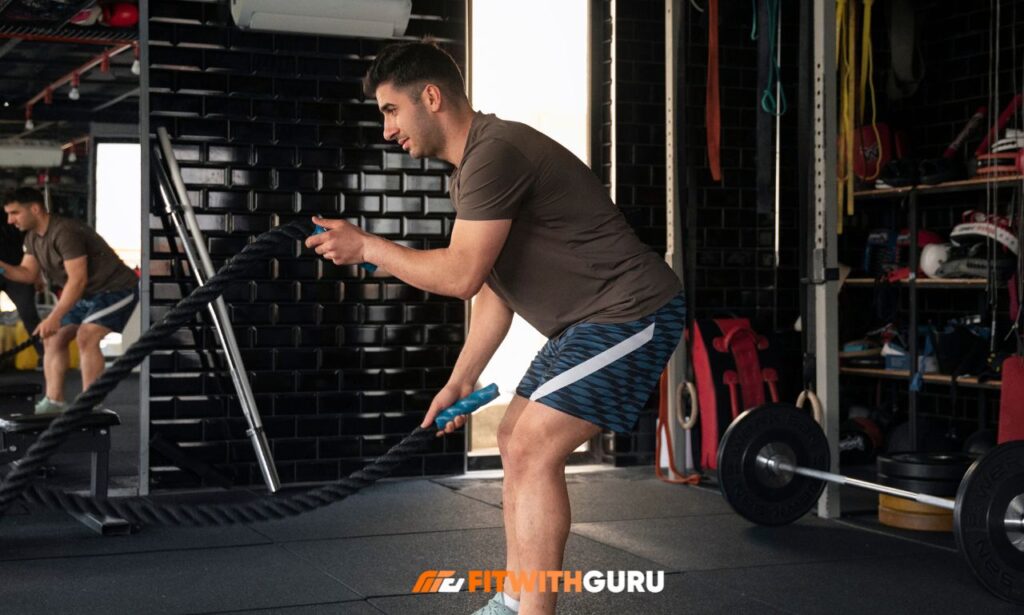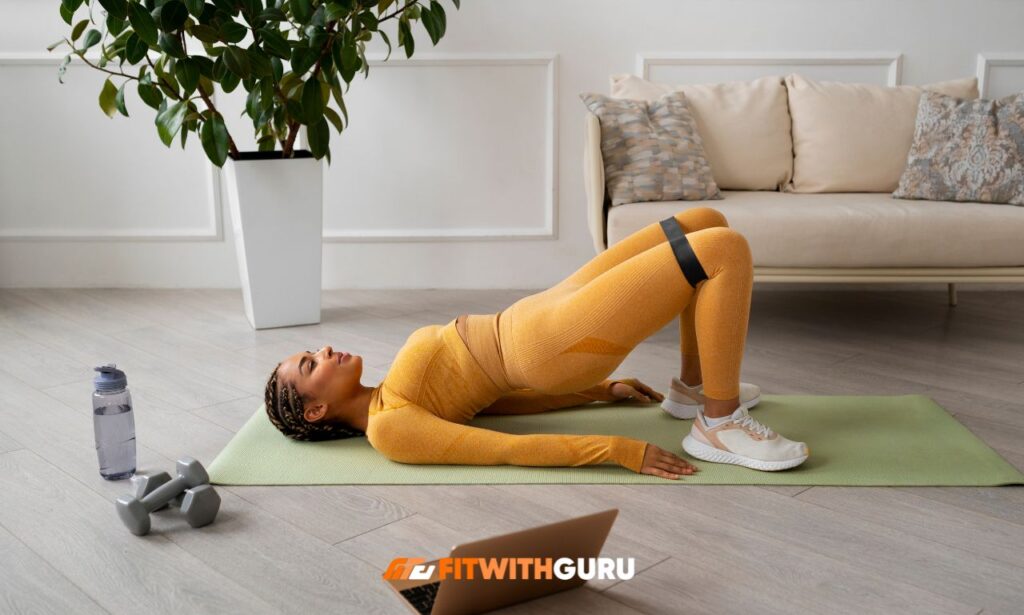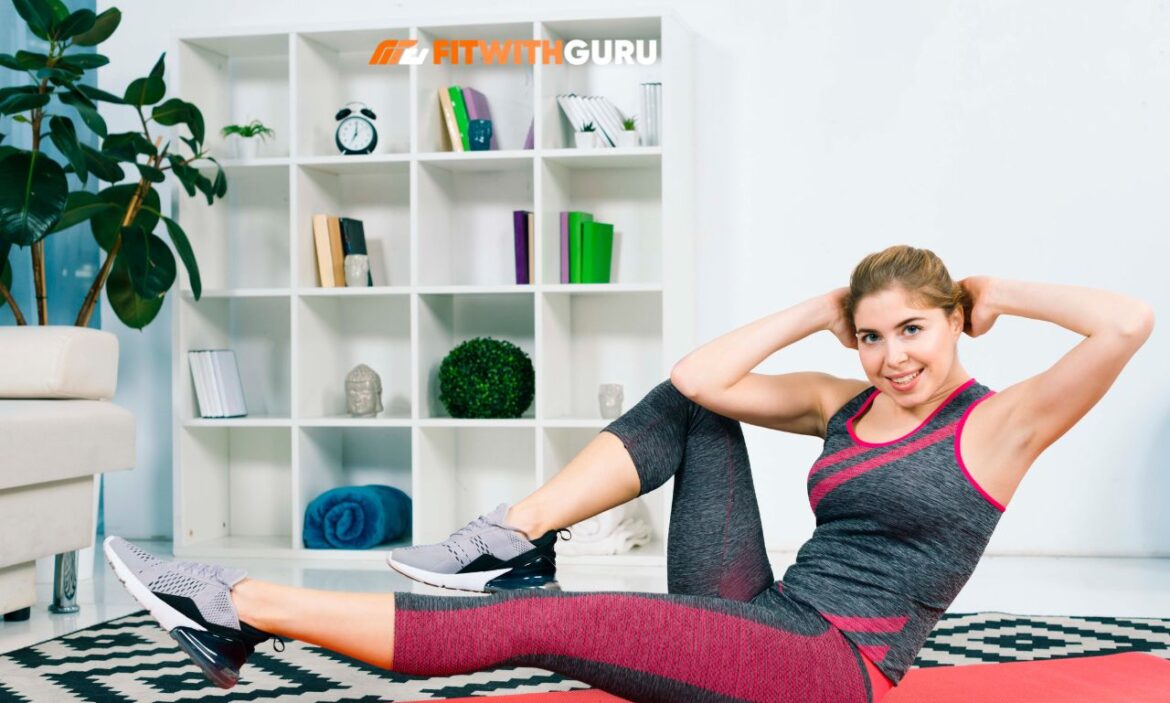When it comes to building a sustainable fitness routine, the 5 exercises to do everyday can transform your health, energy levels, and overall well-being without requiring hours at the gym.
These fundamental movements target multiple muscle groups, improve cardiovascular health, and can be modified for any fitness level—whether you’re a busy professional, a senior looking to maintain mobility, or a woman seeking strength and flexibility.
The beauty of establishing a daily exercise habit lies in its simplicity and consistency.
Rather than overwhelming yourself with complex workout programs, focusing on five core exercises creates a manageable routine that delivers remarkable results over time.
Why Daily Exercise Matters More Than You Think
Your body thrives on consistent movement, not sporadic intensity.
Daily exercise keeps your metabolism active, maintains muscle mass, and supports joint health in ways that weekend warrior approaches simply cannot match.
When you commit to performing specific exercises every single day, you’re reprogramming your body’s baseline functionality.
The cumulative effect of daily movement compounds over weeks and months, leading to sustainable transformations that crash diets and extreme workout programs rarely achieve.
For seniors, daily exercise becomes even more critical as it directly combats age-related muscle loss, maintains bone density, and preserves the independence that makes life enjoyable.
Women benefit particularly from daily exercise routines that support hormonal balance, bone health, and the functional strength needed for everyday activities, from carrying groceries to playing with children.
The 5 exercises to do everyday for seniors focus on maintaining mobility and preventing falls, while the 5 exercises to do every day for female practitioners emphasize full-body strength and metabolic health.
The Science Behind These 5 Essential Movements
The 5 exercises to do everyday are based on fundamental movement patterns that humans have performed throughout evolutionary history.
These exercises—squats, push-ups, planks, lunges, and bridges—engage multiple muscle groups simultaneously, making them incredibly efficient for building full-body strength.
Compound movements like these trigger stronger hormonal responses than isolation exercises, releasing growth hormone and testosterone that support muscle development and fat loss.
Functional fitness experts agree that movements that mimic real-life activities yield the most practical strength gains.
When you squat daily, you’re training the exact movement pattern needed for sitting down and standing up—a fundamental activity that helps determine independence in later years.
Push-ups develop the upper body strength required for everything from opening heavy doors to catching yourself during a fall.
The metabolic benefits extend beyond the workout itself, as these exercises create an “afterburn effect” in which your body continues burning calories for hours after you finish.
1. The Bodyweight Squat—Foundation of Lower Body Strength
The bodyweight squat stands as the king of lower-body exercises because it simultaneously works your quadriceps, hamstrings, glutes, and core stabilizers.
- Start by standing with feet shoulder-width apart, toes pointing slightly outward at about 15 degrees.
- As you descend, imagine sitting back into an invisible chair while keeping your chest lifted and your weight distributed evenly across your entire foot.
- Your knees should track over your toes without collapsing inward, and your hips should descend to at least parallel with your knees for a full range of motion.
The 5 exercises to do everyday for female practitioners often emphasize squats because they specifically target the glutes and thighs while supporting pelvic floor health.
For beginners, perform 2 sets of 10-12 repetitions, focusing on perfect form rather than speed or depth.
Advanced practitioners can progress to 3 sets of 20 repetitions or add variations, such as pulse squats at the bottom position.

Squat Modifications for Seniors
The 5 exercises to do everyday for seniors should include modified squats using a chair for support—simply practice sitting down and standing up with control, gradually reducing hand assistance as strength improves.
Chair squats provide the same movement pattern while offering security and confidence for those concerned about balance.
As strength develops, seniors can progress to lightly touching the chair without fully sitting, then eventually perform freestanding squats with proper form.
2. Push-Ups – Upper Body Power and Core Stability
Push-ups deliver comprehensive upper body development by targeting your chest, shoulders, triceps, and the entire anterior core chain.
- Begin in a high plank position with hands slightly wider than shoulder-width apart, body forming a straight line from head to heels.
- Lower your body until your chest nearly touches the floor, keeping your elbows at roughly a 45-degree angle from your torso rather than flaring straight out to the sides.
- Press back up explosively while maintaining that rigid core connection throughout the entire movement.
Women often benefit from starting with incline push-ups against a countertop or bench, which reduces the resistance while maintaining proper movement patterns.
Seniors should begin with wall push-ups, standing at arm’s length from a wall and performing the push-up against the vertical surface.
Push-Up Progression Strategies
Standard push-up progressions include: wall push-ups (easiest), incline push-ups on a bench, knee push-ups, and finally full push-ups from the floor.
Aim for 2-3 sets of 8-15 repetitions depending on your current strength level, and remember that even 5 quality push-ups outperform 20 sloppy ones.
The key to push-up mastery lies in maintaining proper body alignment throughout the movement—imagine your body as a rigid plank moving through space.
3. The Plank – Core Strength That Protects Your Spine
The plank hold builds extraordinary core endurance while teaching your body to maintain spinal stability under tension.
- Position yourself face-down with forearms on the ground, elbows directly beneath shoulders, and body elevated in a straight line from head to ankles.
- Engage your core by imagining you’re bracing for a punch to the stomach, squeeze your glutes, and breathe steadily without holding your breath.
- The most common mistake involves allowing the hips to sag or pike upward—your body should form one continuous line throughout the hold.
For the 5 exercises to do everyday routine, start with 3 sets of 20-30 second holds if you’re a beginner, progressively adding 5-10 seconds each week.
Intermediate practitioners should aim for 45-60 second holds, while advanced exercisers can aim for 90 seconds or introduce variations such as side planks.
Advanced Plank Variations
Side planks specifically target the obliques and help correct muscular imbalances that contribute to lower back pain.
Seniors can modify by performing planks on their knees or on an incline surface, such as a sturdy couch or bed frame.
Dynamic plank variations include shoulder taps, alternating leg lifts, or plank-to-downward dog transitions that add movement to the static hold.
4. Lunges – Balance, Coordination, and Unilateral Strength
Lunges develop single-leg strength that directly translates to improved balance and reduced fall risk, making them especially valuable for aging adults.
- Stand tall with feet hip-width apart, then step forward with one leg, lowering your hips until both knees bend to approximately 90 degrees.
- Your front knee should remain directly above your ankle, never pushing forward over your toes, while your back knee hovers just above the ground.
- Push through your front heel to return to the starting position, then repeat on the opposite leg for one complete repetition.
The 5 exercises to do everyday for female fitness enthusiasts often emphasize lunges because they target the glutes and create that sculpted lower body appearance many women desire.
Reverse lunges (stepping backward instead of forward) provide a more knee-friendly variation that reduces stress on the patellar tendon.
Lunge Variations for All Fitness Levels
Start with 2 sets of 8-10 lunges per leg, focusing on controlled movement and steady breathing throughout each repetition.
Seniors performing the 5 exercises to do everyday for seniors might prefer stationary split squats, where the back foot remains elevated on a low step, reducing the balance challenge while maintaining strength benefits.
Walking lunges across a room add a functional element that mimics real-world movement patterns and increases the cardiovascular demand.
5. Glute Bridges – Posterior Chain Activation and Hip Health
The glute bridge specifically targets your posterior chain—the muscles along the back of your body that modern sedentary lifestyles often neglect.
- Lie on your back with knees bent, feet flat on the floor about hip-width apart, and arms relaxed at your sides.
- Press through your heels to lift your hips toward the ceiling, squeezing your glutes at the top position until your body forms a straight line from shoulders to knees.
- Hold the peak contraction for 2-3 seconds while consciously engaging your glute muscles, then lower with control back to the starting position.
This exercise counteracts the hip flexor tightness and glute amnesia that develops from prolonged sitting at desks or in cars.
Women particularly benefit from glute bridges as they support pelvic floor health and combat the postural changes that can occur after pregnancy.

Maximizing Glute Bridge Effectiveness
Perform 2-3 sets of 15-20 repetitions, or try single-leg variations where one foot remains elevated for increased difficulty.
The 5 exercises to do everyday for seniors should definitely include bridges, as they specifically address the hip extension strength needed for walking, climbing stairs, and standing from seated positions.
Adding a resistance band around the thighs just above the knees intensifies the exercise and forces greater glute activation throughout the movement.
Creating Your Daily Routine: Timing and Progression Strategies
The complete 5 exercises to do everyday routine should take approximately 15-20 minutes from start to finish, making it realistic even for the busiest schedules.
Begin each session with 3-5 minutes of light movement, such as marching in place, arm circles, and leg swings, to warm up your muscles and joints.
Perform the exercises in the order presented: squats, push-ups, planks, lunges, and bridges, resting 30-60 seconds between sets.
Your weekly progression should follow the principle of progressive overload—gradually increasing repetitions, sets, or difficulty every 1-2 weeks.
Track your workouts in a simple notebook or phone app, recording the number of repetitions and sets completed each day to monitor improvements.
Morning workouts often provide the best consistency because fewer unexpected disruptions occur early in the day compared to evening sessions.
The 5 exercises to do everyday for female practitioners might benefit from slightly higher repetition ranges (15-20) compared to male exercisers who might target 8-12 reps with more challenging variations.
Listen to your body’s signals—mild muscle soreness indicates productive training, while sharp pain suggests improper form or the need for additional rest.
Common Mistakes That Sabotage Your Results
Even with simple exercises, technique errors can limit effectiveness and increase injury risk.
The most prevalent squat mistake involves allowing the knees to collapse inward rather than tracking over the toes throughout the movement.
During push-ups, many people forget to engage their core, leading to excessive arching of the lower back and stressing the lumbar spine.
Plank performance suffers when people hold their breath or let their hips sag, both of which reduce the exercise’s effectiveness.
Lunges often show forward knee translation, where the front knee extends past the toes, placing unnecessary stress on the patellar tendon.
Bridge exercises lose their potency when people rely on lower back extension rather than true glute contraction to lift the hips.
Recording yourself with a smartphone camera provides valuable feedback about your form, revealing mistakes that you cannot feel during execution.
The 5 exercises to do everyday routine work best when you prioritize movement quality over quantity—10 perfect repetitions outperform 30 sloppy ones every single time.
FAQs
Can I really see results by doing just 5 exercises everyday?
Absolutely—consistency matters far more than complexity in fitness programming. The 5 exercises to do everyday target all major muscle groups through compound movements that deliver comprehensive strength development.
Most people notice improved energy within the first week, visible body composition changes within 4-6 weeks, and substantial strength gains within 8-12 weeks. The key lies in progressive overload, gradually increasing repetitions or difficulty as your body adapts to the training stimulus.
How long should I spend on the 5 exercises to do everyday for seniors?
Seniors should allocate 20-30 minutes, including warm-up, exercises, and cool-down stretching. The actual exercise portion typically requires 15 minutes once you’re familiar with the movements.
Quality and safety supersede speed, so take adequate rest between sets and never rush through repetitions. If fatigue occurs, split the routine into morning and evening sessions rather than compromising form.
What if I can’t do a single push-up—should I skip that exercise?
Never skip exercises simply because they’re challenging—instead, modify them to match your current abilities. Begin with wall push-ups, which provide the same movement pattern with significantly reduced resistance.
Progress to incline push-ups on a sturdy table or countertop, gradually lowering the incline as strength develops. Most people can perform their first full push-up within 4-8 weeks of consistent practice using proper progressions.
Are the 5 exercises to do everyday for females different from men’s routines?
The fundamental exercises remain identical, though women often benefit from emphasizing lower-body exercises that support bone density and pelvic floor health.
Women typically respond well to slightly higher repetition ranges (12-20) compared to men (8-12), though individual preferences vary. Hormonal differences mean women may experience fluctuations in strength throughout their menstrual cycle, which is entirely normal.
Can I do these exercises if I have joint pain or previous injuries?
Exercise modifications exist for nearly every condition, but consult healthcare providers before beginning any new program with existing injuries. Joint-friendly modifications include reducing range of motion, using elevated surfaces to decrease load, or substituting alternative exercises.
Water-based versions of these movements provide resistance while minimizing joint stress for people with arthritis or chronic pain.
Conclusion
The 5 exercises to do everyday represent a powerful yet accessible approach to lifelong fitness that requires minimal equipment and time investment.
By committing to these fundamental movements—squats, push-ups, planks, lunges, and bridges—you’re building a foundation of functional strength that enhances every aspect of daily living.
Whether you’re practicing the 5 exercises to do everyday for seniors to maintain independence, or the 5 exercises to do everyday for female health and strength, consistency will consistently outperform sporadic intensity.
Start today with whatever modifications match your current fitness level, track your progress, and celebrate the incremental improvements that compound into transformative results.
Remember that FitWithGuru is here to support your journey with evidence-based fitness information that empowers you to take control of your health—one daily workout at a time.

